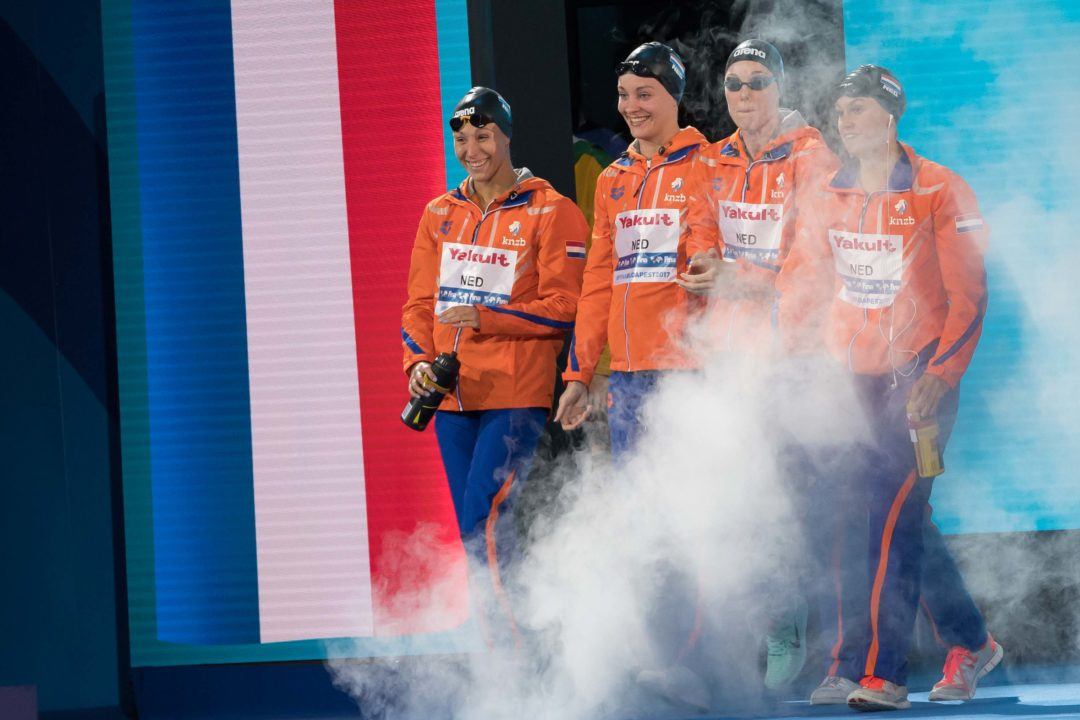The Dutch swimming squad’s number of medals between the 2012 London Olympics and the 2016 Rio Olympics was cut in half, as only the nation’s open water swimmers came away with hardware at the most recent Summer Games. Despite bringing two-time Olympic champion Ranomi Kromowidjojo and top talents such as Femke Heemskerk and Sebastian Verschuren to Brazil, it was only Sharon van Rouwendaal and Ferry Weertman who climbed atop the podium to bring gold back to Netherlands.
In light of those results, as well as the fact that the Dutch Federation’s (KNZB) Technical Director at the time, Joop Alberda, resigned just before the 2016 Olympics, an evaluation committee conducted its own investigation into the overall culture, training approaches, and personnel involved with its entire squad.
Published in October 2016, the report stated that the staff let ‘its own issues dominate instead of rendering themselves at the service of the athletes’ and in-pool deliverables of the federation while in Rio. There was strong evidence supporting the hypothesis that ‘the swimmers were good enough physically to produce medals, but lacked a motivating and positive social environment in order to deliver good performances.’
As such, the organization took to assessing its strengths and weaknesses to come up with a refreshed vision to move forward and ensure the sport of swimming doesn’t get left behind as a ‘former glory’ notion for the small nation. Current Technical Director André Cats recently revealed the first steps of an all-encompassing plan aimed at ensuring ‘peace and respect’ within top Dutch swimming. The plan also announces the federation will be tackling the issue of maintaining the interesting in swimming for children of all ages.
Per the letter from Cats published on the KNZB site, Cats states, “With this letter we want to clarify the direction in which we want to develop swimming within the KNZB in the period 2018-2024. We try to be as complete and clear as possible so that everyone involved knows where they stand. In Dutch swimming everyone can have their own opinion and determine their own direction. I hope, however, that we join forces with as many people as possible behind the KNZB plans. In this way, by pulling together, we can achieve results and let swimming in full bloom.”
The plan attached on the same site lists out current problem areas, as well as goals for addressing these in the near future. A more detailed document will be released at a later point in time, but here are the main points from the recently released high-level document:
- The KNZB wants to continue to show the world that a small country with a strong swimming tradition can continue to prosper by way of a structured and thoughtful approach.
- The organization also wants swimming to flourish at all levels using sophisticated training and competition programs aimed at keeping swimmers enthusiastic throughout their careers.
- Additionally, the federation wants to keep competition attractive in light of the growing and changing needs of both children and parents.
In terms of identifying current problem areas, the KNZB acknowledges that interest in Dutch competitive swimming has ‘fallen sharply’. “In the junior/youth age group, too many swimmers stop,” reads the report. Additionally, the organization says that their method of selecting the junior and youth competitors on the basis of performance level only is problematic.
Other problem areas identified include the fact that the Dutch squad is ‘traditionally good at the shorter swimming distances’, but the 200 meters and above races also need to be targeted.
Overall, the KNZB’s more detailed plan will be aimed at ensuring that suitable competition is offered for the 5 different ‘ambition levels’ categorized within Dutch swimming. Those groups include what they classify as ‘international swimmers’, ‘national swimmers’, Region A swimmers, Region B swimmers, and Club swimmers.
